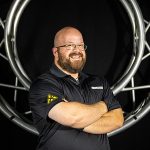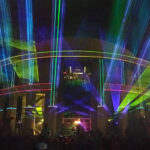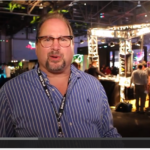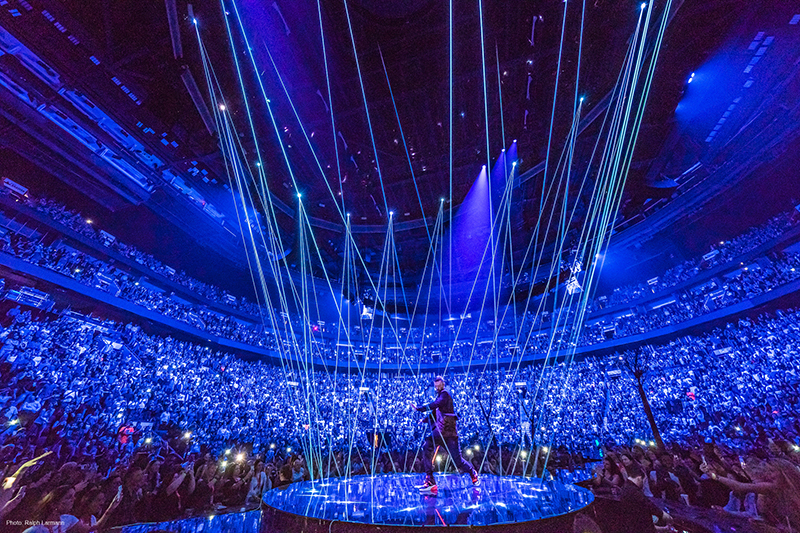
A Q&A with Justin Perry of Pangolin/Kvant and Kelly Sticksel of Fireplay
Lasers have become a mainstream lighting element and a must-have on many world tours, festivals, installs and events. The diversity of effects these fixtures can create is impressive, and it’s one of the main reasons we in the lighting industry are seeing laser displays growing in scale, scope, and size, with some events having upwards of 300-plus fixtures on a single stage. To get insights into some of the latest solutions available, and see how they are put to use on tours, PLSN sat down with Justin Perry, and Kelly Sticksel. Perry is COO at Pangolin Laser Systems, Inc. and Kvant Lasers USA. Sticksel is COO of Fireplay.
Q&A with Justin Perry
PLSN: Pangolin originally started as a laser control company before moving into the manufacturing and production of laser systems together with Kvant. That must have given you a lot of insight into how lasers as a whole need to integrate across a wide variety of laser lighting setups.
Justin Perry: Yes. When you create control, you are constantly asked to modify its functionality, so that it can meet the different workflows of different projects and events taking place. Some lighting designers need easy control from a lighting console, some prefer timecode setups, and some require integration with other lighting elements and multimedia workflows. We understand all of these applications and have worked with lighting designers across each demographic, to get real world feedback on what matters most to them. And we’ve built that functionality in our control products like FB4, QuickShow and Beyond.
How has Pangolin’s knowledge of laser technology and control helped, now that it is co-producing lasers with Kvant? Where are Pangolin and Kvant going, and what is on the horizon?
Justin Perry: A few years back, we released our FB4 media server which was a new laser control hardware integrated inside of our lasers, allowing you as an LD to control the laser just like a standard lighting fixture. FB4 was a game-changer for the industry, and it truly was the first laser control system to bridge the gap between lighting and lasers, putting control back into the LDs hands. And we’ve worked relentlessly to ensure we have support for all major consoles out there — from MA, HOG, AVO and ChamSys, to new consoles coming out like Obsidian. However, we also know that lasers are a dynamic effect and that more than just standard console control is needed, to allow lasers easily integrate into diverse multimedia setups. And this is where some of our latest technology comes into play.
What’s this we hear about laser patterns being called gobos?
Justin Perry: Pangolin has just released a new laser gobo pack, which comes natively on all lasers we provide. These content packs are filled with over 1,500 laser gobos that a lighting designer can control natively from the desk of their choice — with no PC or software required.
Think of it as grabbing your gobo encoder on the lighting desk and turning it until you find the fixture emitting a pattern that appeals to you for that moment. These gobos include simple base looks, as well as more complex and sophisticated patterns. And the latest firmware update for FB4 allows you as the LD to manipulate these gobos even further. Think of it as using more encoders on your console of choice to adjust attributes such as amplitude and speed of the effect.
We hear that LDs are asking for your products to work with CITP and sCAN?
Justin Perry: Pangolin and Kvant have gotten a ton of requests from lighting designers to be able to visualize content of the laser, from their lighting console. So Pangolin worked over the last half year to integrate CITP control into their Beyond software. Now, a lighting designer can see all of their laser content directly on the desk, in real time. It’s immensely powerful! During the same development release, Pangolin also integrated streaming ACN, just to further expand upon the protocols we support.
Are your products outfitted to accept Timecode and Art-Net as well?
Justin Perry: Timecode laser shows are also immensely popular on major tours, and on larger festival shows (EDC, for example). As such, Pangolin and Kvant also implemented Art-Net Timecode into the FB4 and Beyond workflow, so that lighting designers have the ability to perfectly synchronize laser looks, with other multimedia elements in their show.
Through your partnership with Kvant, I understand that you are now taking all this new technology and building it into your classic Spectrum and Atom lines for touring along with the newer ClubMAX line and new BurstBerry modular laser systems…
Justin Perry: Yes. So no matter what your project — from touring and rental, to live show control, or permanent install, systems from Pangolin and Kvant can work across all these different applications.
What do you think separates Pangolin and KVANT from other laser manufacturers?
Justin Perry: We cover the gamut in every type of application one could spec a laser for. Most projector manufacturers are building lasers for one specific demographic or workflow, but in doing so, they limit their customer’s creative abilities and the applications they can use the lasers for. This forces them to buy a different type of laser, or entirely new setups, for different projects. Whereas we are providing a truly “turn-key” solution, that can work across the board. So no matter where you want to use a laser, and no matter how you want to control it, we’ve got you covered.
We highly value relationships as well, and this is one of our strongest competitive advantages. We’re incredibly proud of our clients, and the innovative work they have done using Pangolin and Kvant products. They help us keep a pulse on the industry and are constantly sharing feedback with us on how we can continually improve our designs. This collaborative approach, is something we cherish!”
Q&A with Kelly Sticksel
PLSN: Kelly, we understand you have worked with both Pangolin and Kvant products. Tell us a bit more about your experience with this brand.
Kelly Sticksel: I look back over my career and realize that I’ve been using Pangolin products from the earliest days. I’ve tried others for various reasons but keep going back to Pangolin simply due to functionality and reliability. Same for Kvant lasers — I’ve been quoted many times over the years saying that I believe Kvant lasers are the workhorses of the touring laser world. They just keep working and they take the beatings we give them on the road better than most. In touring, reliability and ease of maintenance are everything.
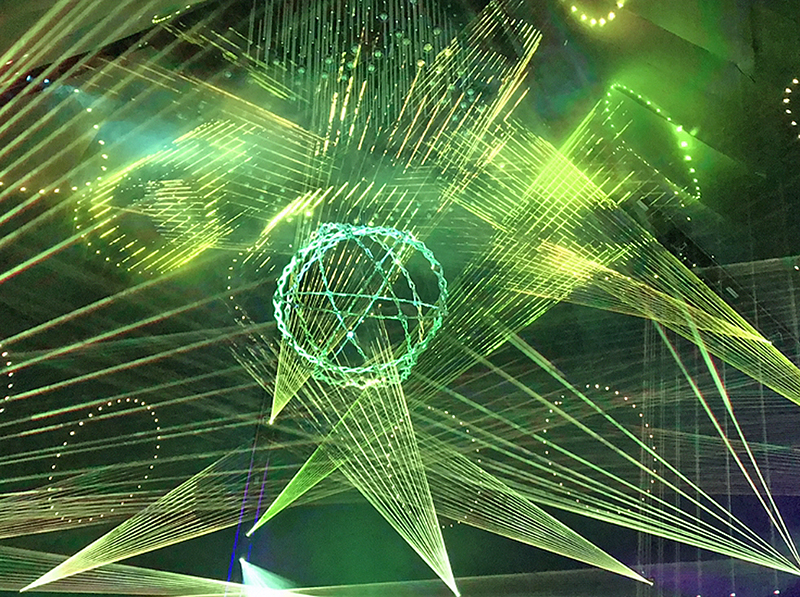
Name a few real world applications that utilized your talents and these tools.
Kelly Sticksel: Over the past couple of years, I’ve been honored to have designed and produced some truly memorable effect sequences using lasers. From Justin Timberlake’s renowned mic-stand dance on his Man of the Woods tour to the Lune Rouge PY1 Experience in Montreal, these laser-based scenes are as unique from each other in technique as they are similar in their Beyond control architecture.

Can you expand on the Timberlake Man of the Woods sequence?
Kelly Sticksel: It was envisioned to allow JT to use just his mic stand and the laser pulses as his dance partners — ballsy, yet a true crowd pleaser. Beyond’s structured timeline editor allowed Strictly FX’s Grant Sellers to program thousands of laser cues at split second timing, creating one of this year’s most memorable touring sequences.
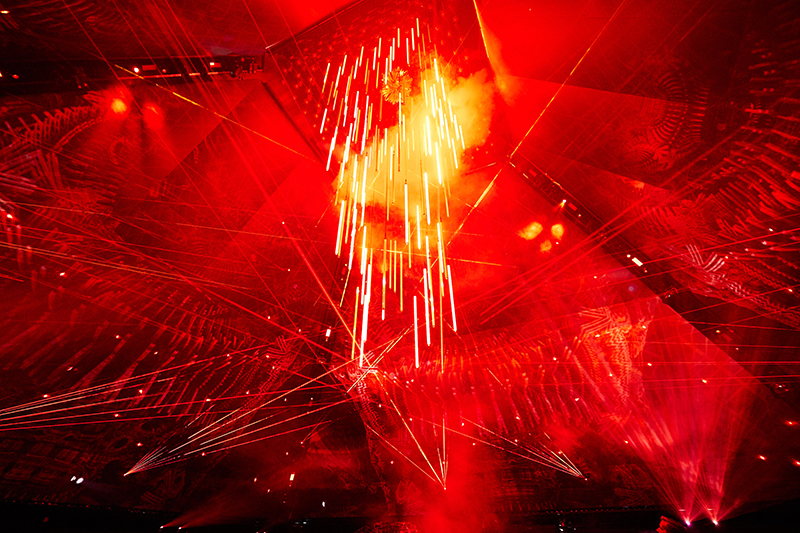
And PY1?
Kelly Sticksel: The PY1 Experience pyramid was a unique opportunity to design a cutting-edge theatrical experience for Lune Rouge. Fireplay was already providing production design and architectural design services. For this installation, I ended up designing a system of 30 high-power lasers, placed strategically throughout the massive pyramid. With this design, I had the vertical depth to explore layers and immersive techniques like never before.
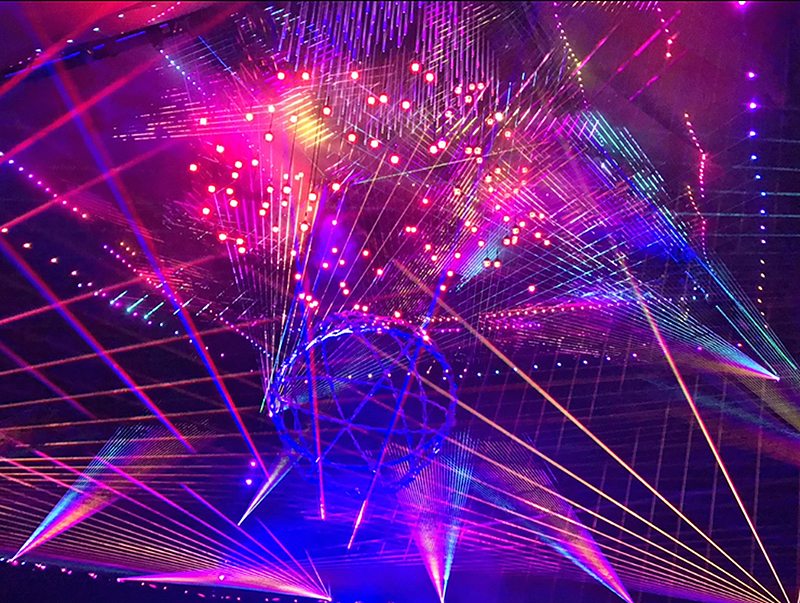
But I also knew this pyramid would be portable and operate on minimal staff — so these lasers had to be tough and uber-reliable. Kvant and Beyond were my go-to tools. The Kvant/Beyond combination ensured all 30 lasers had consistent color and beam shaping while the reliability of the Kvant infrastructure allows the show to function perfectly every night with a minimal staff. Future Weapons deftly programmed the sequences into a truly memorable experience. I was pleased to spec these systems for both shows and the end results continue paying dividends nightly.”
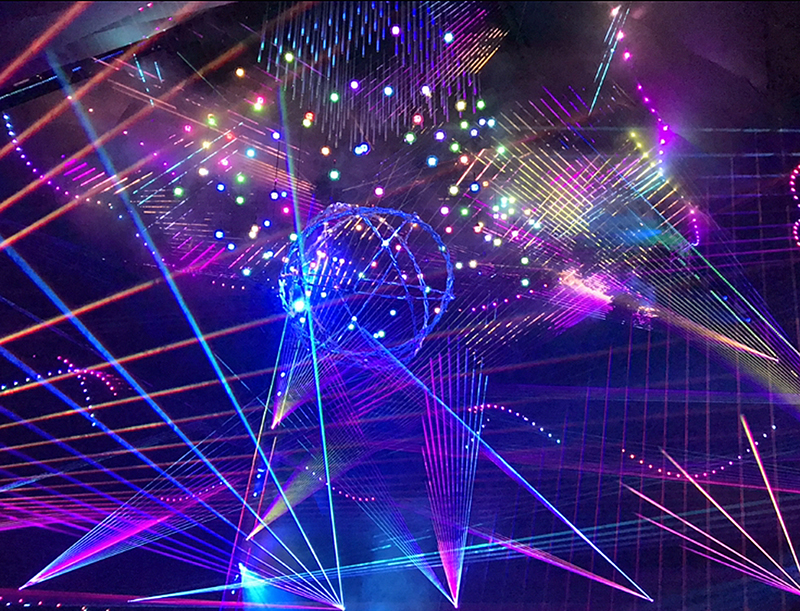
For more information, visit www.pangolin.com, www.kvantlasers.us, www.fireplay.com and www.fwlasers.com.
